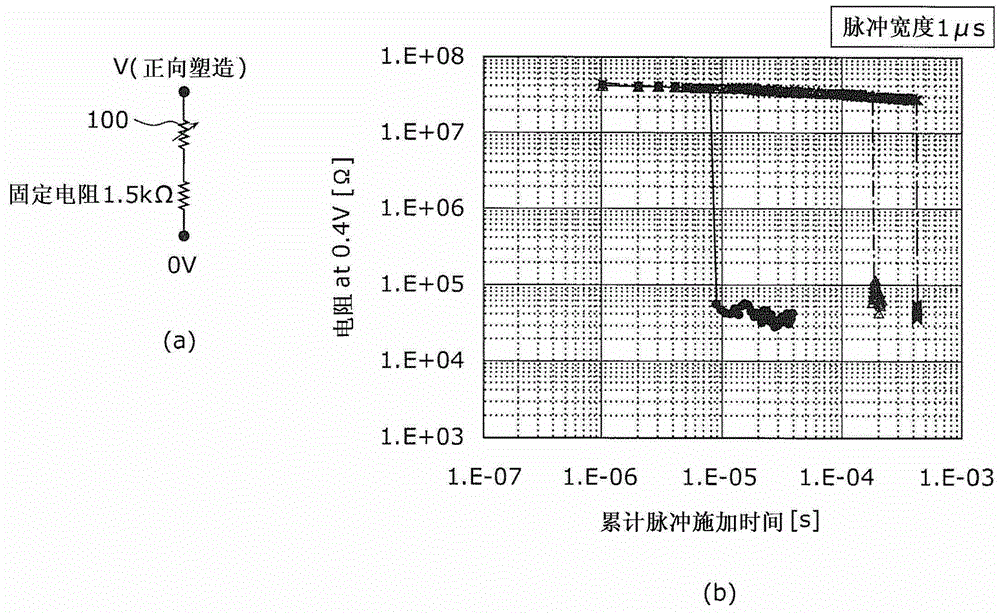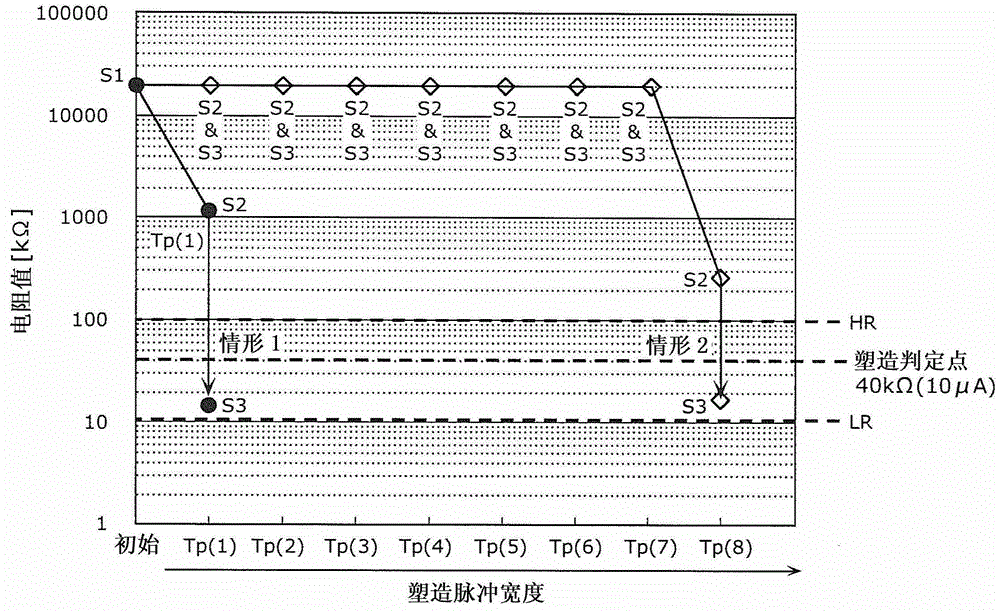Forming method for variable resistance non-volatile memory element and variable resistance non-volatile memory device
A non-volatile storage and resistance change technology, which is applied to the shaping of resistance change type non-volatile memory elements and the fields of resistance change type non-volatile memory devices, can solve the problem of increasing the shaping voltage of resistance change elements and shaping the voltage. deviations, etc.
- Summary
- Abstract
- Description
- Claims
- Application Information
AI Technical Summary
Problems solved by technology
Method used
Image
Examples
Embodiment Construction
[0117] First, for Figure 29 The shown 1T1R type memory cell composed of a variable resistance element shows molding characteristics for the case where Pt (platinum) is used in the upper electrode 100c and the case where Ir (iridium) is used for the upper electrode 100c, And explain its technical problems, wherein the variable resistance element is composed of the first transition metal oxide layer 100b-1 (here, TaO x , 0y , x<y) to form.
[0118] Here, in the sample used in the experiment, the area of the variable resistance layer 100b is 0.25 μm 2 (=0.5μm×0.5μm), having a first transition metal oxide layer 100b-1 (here, TaO x : X=1.54, film thickness: 44.5nm), and the second transition metal oxide layer 100b-2 (here, TaO y : y=2.47, film thickness: 5.5 nm). The NMOS transistor serving as a switching element has a gate width W: 0.44 μm, a gate length L: 0.18 μm, and a gate insulating film thickness Tox: 3.5 nm.
[0119] The second transition metal oxide layer 100b-2 (h...
PUM
 Login to View More
Login to View More Abstract
Description
Claims
Application Information
 Login to View More
Login to View More - R&D
- Intellectual Property
- Life Sciences
- Materials
- Tech Scout
- Unparalleled Data Quality
- Higher Quality Content
- 60% Fewer Hallucinations
Browse by: Latest US Patents, China's latest patents, Technical Efficacy Thesaurus, Application Domain, Technology Topic, Popular Technical Reports.
© 2025 PatSnap. All rights reserved.Legal|Privacy policy|Modern Slavery Act Transparency Statement|Sitemap|About US| Contact US: help@patsnap.com



